About dassoXTR
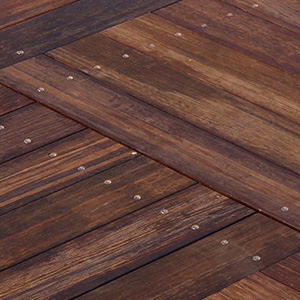
Q: What is dassoXTR Fused Bamboo®?
A: dassoXTR Fused Bamboo
® is manufactured using dasso's patented process, which combines two stages of high heat to first carbonize the bamboo, removing all of the starch and sugar, and then restructure the bamboo, reinforcing its natural strength characteristics. The modified bamboo strands are then fused together using phenolic resin – the same resins used to make bowling balls. The result is an extremely dense, durable exterior-use product composed of 87% natural, fused strand bamboo fibers and 13% resin (or as we like to say, 13% bowling ball). dassoXTR Fused Bamboo looks and acts much like other natural hardwood products, specifically Ipe hardwood. But, because our patented Fused Bamboo does not include rays or knots like natural woods, dassoXTR Fused Bamboo has a much more flawless appearance and resistance to shrinkage than other decking materials made from woods. This consistent grain structure also allows dassoXTR to distribute weight very evenly, adding to its durability.
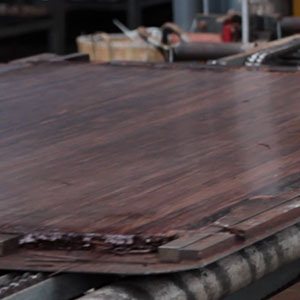
Q: How is Fused Bamboo® different from traditional bamboo decking?
A: There are a number of processes that can be used to turn stalks of bamboo into planks for decking. Most manufacturers either take long strips of bamboo and laminate them together or shred the bamboo and compress it with glue. Both of these processes lead to a product that doesn’t hold up well when exposed to weather: laminated bamboo strips are prone to cupping and separating, while compressed shredded bamboo is often brittle and will quickly degrade when exposed to the elements.
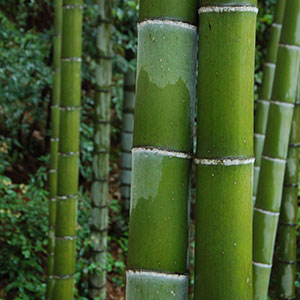
Q: Why is dassoXTR’s fused process so effective?
A: During the patented fused process, sugar and starch are extracted from the bamboo fiber, leaving only the bamboo cell wall. Without these nutrient and food sources, fungus will not attach to the bamboo cells and grow, thereby eliminating the breakdown of the cell walls – which is the cause of rot. Without a nutrient source, insects also are not attracted to the material, which further protects the bamboo from decay.
All bamboo must be carbonized, or heat treated, before it can be used outside. However, when bamboo is heat treated it gets very brittle. dassoXTR’s patented process eliminates this issue by applying a second heating stage. During this stage, lignum, a natural binder found in the bamboo fiber, is melted and reset, returning the bamboo to its natural rigidity. This increased strength produces a denser, harder board, while still maintaining bamboo’s natural characteristics.
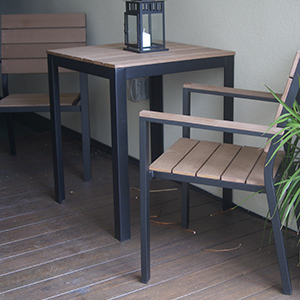 Q: How does dassoXTR compare to other exterior building materials?
Q: How does dassoXTR compare to other exterior building materials?
A: dassoXTR’s remarkable durability makes it a unique material for use in outdoor construction materials, including decking, siding, and furniture. In fact, dassoXTR fused bamboo is among the stiffest and strongest decking materials in the world and is even more dense than Ipe – a natural wood that is widely accepted for outdoor use. dassoXTR products are also Class A Fire rated using C NFPA and IBC Classifications tested to ASTM E-84-12 and decay and insect resistant (including resistance to termites).
Tested in accordance with International Code Council (ICC) standard AC174 for exterior decking, dassoXTR has been approved/accepted as a product suitable for exterior usage.
To find out more about how dassoXTR stacks up against other popular decking materials, see dassoXTR vs Other Decking Materials.
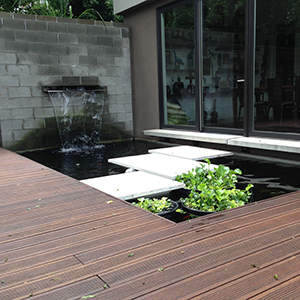 Q: Is dassoXTR considered an environmentally friendly product?
Q: Is dassoXTR considered an environmentally friendly product?
A: Yes. Unlike most hardwoods, which must grow for 50 years or more before they can be harvested, bamboo is a fast-growing grass that can be harvested every 5-7 years. This makes bamboo one of the most environmentally friendly and sustainable building products available. As a product made from a rapidly renewable material with a harvest cycle of less than 10 years, dassoXTR is eligible for an MR-6 LEED Credit, which is the highest credit available for renewable materials. In addition, the resins used to create dassoXTR are thermal setting and non-reversible, which means no fumes are released into the atmosphere. Thus, dassoXTR contains no volatile organic compounds (VOCs).